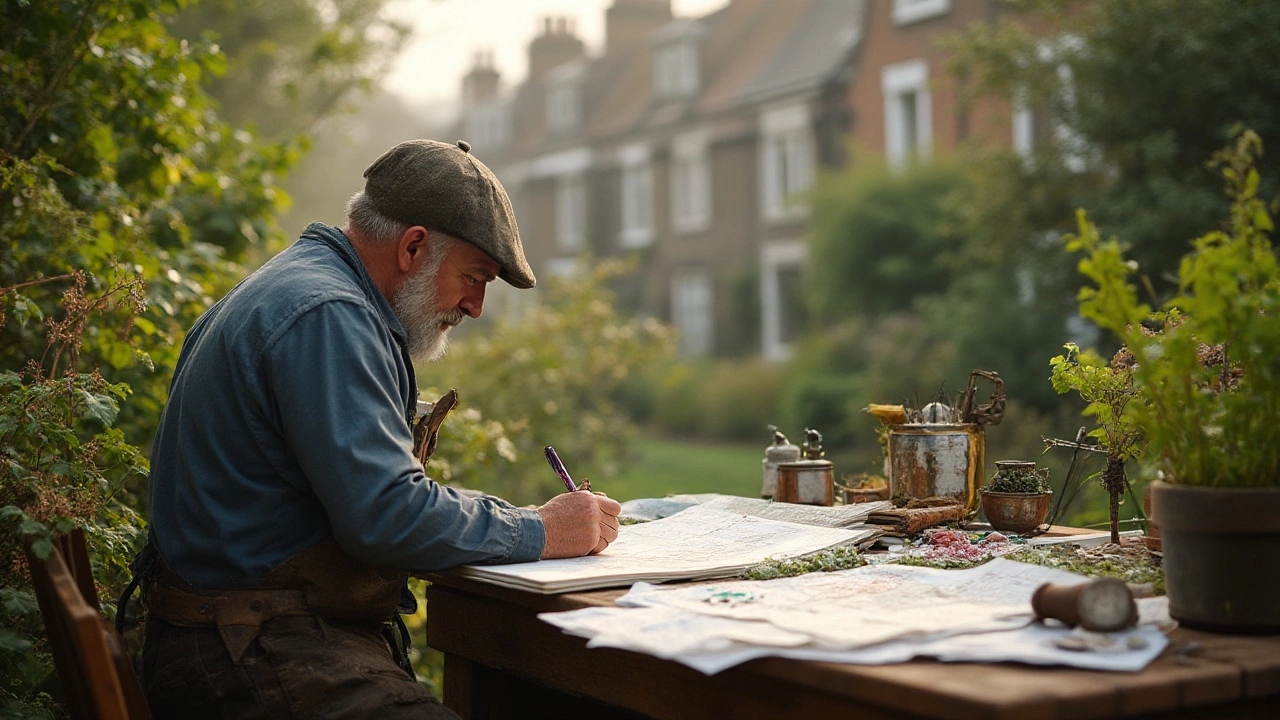Garden Design Made Simple: Quick Tips for a Fresh Outdoor Space
Want a garden that looks great without spending a fortune? You don’t need a landscape architect – just a plan, a few basic tools, and a clear idea of what you want. Below you’ll find straight‑forward steps you can follow this weekend to turn a bland yard into a place you actually want to spend time in.
Start with a Simple Sketch
Grab a sheet of paper or use a free phone app. Draw the outline of your garden, mark doors, windows and any permanent features like trees or fences. Then decide on zones: where will you eat, where will you grow veggies, and where will you just sit and relax. Keeping the zones clear helps you choose the right plants and furniture later on.
Don’t overthink the details at this stage. Sketches are meant to be rough – just enough to see the flow of traffic and where you’ll need pathways. A 2‑meter wide path is usually comfortable for two people walking side by side, and it keeps wheels of garden carts from hitting flower beds.
Pick a Few Key Plants and Keep It Realistic
Instead of trying to fill every square foot with exotic plants, choose three to five types that suit your climate and soil. Look for a mix of height: a tall shrub at the back, a medium‑sized perennials in the middle, and low‑ground cover in front. This layered look feels full without a lot of effort.
Check the sunlight map of your garden. South‑facing spots get the most sun, north‑facing get shade. Plant sun‑loving herbs like rosemary or basil where they’ll get at least six hours of light, and shade‑tolerant ferns or hostas in the darker corners. Matching plants to light saves you watering and fertiliser later.
Budget‑Friendly Hardscape Ideas
Pathways don’t have to be poured concrete. Gravel, crushed stone, or reclaimed bricks are cheap and easy to lay yourself. Lay a weed membrane underneath, spread a layer of sand, then set your stones. The result is a stable, attractive path that drains well.
If you want a sitting area, repurpose old pallets into a simple sofa frame and add outdoor cushions. A DIY fire pit can be built from a large steel bowl and some sand. These projects cost under £100 but add a lot of personality.
Maintain Less, Enjoy More
Mulch is your best friend. A 5‑cm layer of wood chips or shredded bark keeps weeds down, holds moisture, and makes the garden look tidy. Apply it once a year in spring and you’ll cut down on weeding time dramatically.
Set up a drip‑irrigation line for high‑need plants. It’s cheap, saves water, and you can connect it to a timer. Even a cheap 2‑hour daily run can keep beds hydrated during dry spells.
Remember, garden design is a process, not a one‑off job. Start small, enjoy the results, then tweak as you go. With a clear sketch, a few right plants, and easy hardscape tricks, you’ll have a garden that feels intentional and inviting – all without breaking the bank.

What Does a Landscaper Actually Do? A Real-Life Look at Landscaping Services and Skills
Jul 25, 2025, Posted by Damon Blackwood
Unpack what a landscaper really does, from creative garden design to hands-in-the-dirt maintenance. Get practical insights, surprising facts, real tips, and more.
MORESEARCH HERE
Categories
TAGS
- foundation repair
- commercial construction
- construction
- new builds
- home improvement
- home renovation
- bathroom renovation
- residential construction
- construction materials
- home foundation
- renovation tips
- building types
- contractor
- foundation cracks
- home construction
- architectural services
- building codes
- construction differences
- home inspection
- kitchen installation